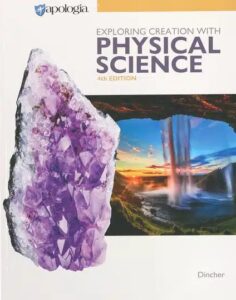 In my opinion, one of the best ways to think deeply about an issue is to read about it from different points of view. Generally, I have to do that by reading many books by different authors on the same topic. In that situation, however, I don’t get to experience any interaction between the authors. That’s what makes a book like Perspectives on the Historical Adam and Eve: Four Views so valuable.
In my opinion, one of the best ways to think deeply about an issue is to read about it from different points of view. Generally, I have to do that by reading many books by different authors on the same topic. In that situation, however, I don’t get to experience any interaction between the authors. That’s what makes a book like Perspectives on the Historical Adam and Eve: Four Views so valuable.
In this book, you have four “heavy hitters” in Modern Christianity, each weighing in with his view on the historical Adam. Dr. Kenton Sparks attempts to persuade the reader that the Genesis narrative is not intended to be taken as history, so Adam and Eve did not exist as progenitors of the human race. Instead, the process of evolution produced the human race the way God intended it to. In his mind, this doesn’t take away from the spiritual importance of the story, nor does it affect any of the important issues in Christian Theology. This is often called the “non-historical view of Adam.”
On the other end of the spectrum, Dr. Marcus Ross argues that the Genesis account is a historical narrative, that Adam and Eve really did exist (only thousands of years ago), and they gave rise to the human race. This is often called the “young-earth creationist” (YEC) view.
In between these two ends of the spectrum are Dr. Andrew Loke and Dr. William Lane Craig. Like Dr. Sparks, they both believe that evolution produced the physical form of human beings, but those physical forms were not human, because they did not have God’s image. God chose two of those non-humans-with-human-form, gave them his image, and named them Adam and Eve. Thus, Adam and Eve were real people who God miraculously turned from “animals” into human beings.
The difference between these two scholars is how Adam and Eve produced the human race. Dr. Loke champions the view put forth by Dr. S. Joshua Swamidass, that Adam and Eve existed along with the non-humans-with-human-form. Adam and Eve interbred with them, and all members of the modern human race can be traced genealogically back to Adam and Eve, because all non-humans-with-human-form that had no trace of Adam and Eve’s genes ended up going extinct. This is often called the “genealogical Adam” view.
Dr. Craig, on the other hand, thinks that if you go far enough back into the geological record (perhaps 750,000 years ago), you can find the physical form of human beings. When God gave two of them His image, they became fundamentally different from the entities that evolution produced. Thus, they did not interbreed with any non-humans. I wrote about his view after reading his book. This is often called the “mytho-historical Adam” view, because he believes that the Genesis account is a myth that is built around truly historical individuals.
Why do these views exist? Because mainstream genetics claims (I think incorrectly) that it is impossible for the human race’s genetic diversity to be explained in terms of one man and one woman who gave rise to the human race a few thousand years ago. Sparks, Loke, and Craig attempt to interpret Scripture in that light. Ross does not, because he doesn’t think the mainstream view of human genetics is correct on that point.
The book starts with an introduction, and then it is followed with each scholar giving his view. The other scholars’ objections to that view are then given, and then the original scholar offers his rejoinder to the critics. This is incredibly helpful, because it is easier to see the strengths and weaknesses in each of the main essays.
For example, Sparks’s essay states that the best Mesopotamian and Egyptian scholars in the ancient world thought the earth was covered by a solid dome. However, as Craig points out, this is “not merely unjustified but demonstrably false,” and he gives a reference that allows the reader to see why. This is important, because that demonstrably false idea leads some to incorrectly claim that Jewish theologians in the ancient world believed the same thing. In Craig’s essay, he claims that YECs must assume plate tectonics separated the continents after the Flood to explain the distribution of organisms on the planet. In Ross’s objection, he writes, “I have never once encountered a creation geologist who holds this view…” and gives a reference to show that YECs believe plate tectonics separated the continents during the Flood.
To my sincere delight, there was no rancor in the book. Each scholar shows respect to the others and finds some way to praise the others despite their different views. This was both edifying and encouraging. In the end, I thought Dr. Ross’s case was the strongest, but then again, it’s most similar to my view. Nevertheless, reading this book allows a person to see why intelligent, sincere Christians can hold different views on this vitally-important subject.
I will end with a passage from the Afterword, which appears after all the essays and arguments. It is written by Dr. Swamidass, who originated the view championed by Loke. He noted that at a dinner which followed the colloquium in which all these views were debated, Ross was accompanied by several who supported his view. He and his supporters invited Sparks (the one they had the most disagreement with) to join them at their table. The result was a lively conversation that was nevertheless full of love and affection. As Swamidass says:
I left young-earth creationism many years ago. Still, I cannot help but wish that Marcus’s tribe will grow. This type of creationism is far greater than fundamentalism. And if this is what YEC becomes, we would all be better for it.
I could not agree more. As a YEC, I can say that I am saddened by many of my fellow YECs who use insults and invectives to ward off the “heretics.” I have always seen Dr. Ross as someone set apart from that, and I think the YEC movement is better for it. I am encouraged that others are learning to follow his example.

 I wrote the first two editions of Exploring Creation With Physical Science, but the publisher used a different author (Vicki Dincher) to make changes for a third edition.
I wrote the first two editions of Exploring Creation With Physical Science, but the publisher used a different author (Vicki Dincher) to make changes for a third edition. 
